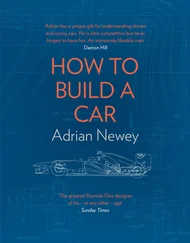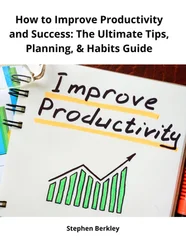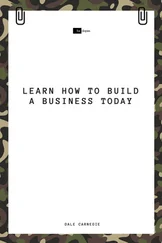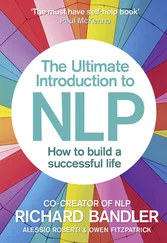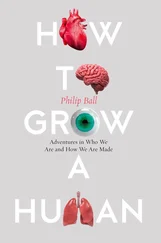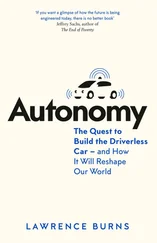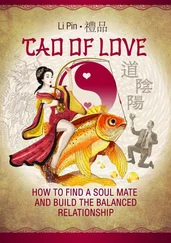Eyal, Nir - Hooked - How to Build Habit-Forming Products
Здесь есть возможность читать онлайн «Eyal, Nir - Hooked - How to Build Habit-Forming Products» весь текст электронной книги совершенно бесплатно (целиком полную версию без сокращений). В некоторых случаях можно слушать аудио, скачать через торрент в формате fb2 и присутствует краткое содержание. Год выпуска: 2014, Издательство: Nir Eyal, Жанр: Старинная литература, на английском языке. Описание произведения, (предисловие) а так же отзывы посетителей доступны на портале библиотеки ЛибКат.
- Название:Hooked: How to Build Habit-Forming Products
- Автор:
- Издательство:Nir Eyal
- Жанр:
- Год:2014
- ISBN:нет данных
- Рейтинг книги:5 / 5. Голосов: 1
-
Избранное:Добавить в избранное
- Отзывы:
-
Ваша оценка:
- 100
- 1
- 2
- 3
- 4
- 5
Hooked: How to Build Habit-Forming Products: краткое содержание, описание и аннотация
Предлагаем к чтению аннотацию, описание, краткое содержание или предисловие (зависит от того, что написал сам автор книги «Hooked: How to Build Habit-Forming Products»). Если вы не нашли необходимую информацию о книге — напишите в комментариях, мы постараемся отыскать её.
Hooked: How to Build Habit-Forming Products — читать онлайн бесплатно полную книгу (весь текст) целиком
Ниже представлен текст книги, разбитый по страницам. Система сохранения места последней прочитанной страницы, позволяет с удобством читать онлайн бесплатно книгу «Hooked: How to Build Habit-Forming Products», без необходимости каждый раз заново искать на чём Вы остановились. Поставьте закладку, и сможете в любой момент перейти на страницу, на которой закончили чтение.
Интервал:
Закладка:
Providing Pricing Flexibility
Renowned investor and Berkshire Hathaway CEO Warren Buffett once said, “You can determine the strength of a business over time by the amount of agony they go through in raising prices.” [xx]Buffett and his partner, Charlie Munger, realized that as customers form routines around a product, they come to depend upon it and become less price-sensitive. The duo have pointed to consumer psychology as the rationale behind their famed investments in companies like See’s Candies and Coca-Cola. [xxi]Buffett and Munger understand that habits give companies greater flexibility to increase prices.
For example, in the free-to-play video game business, it is standard practice for game developers to delay asking users to pay money until they have played consistently and habitually. Once the compulsion to play is in place and the desire to progress in the game increases, converting users into paying customers is much easier. Selling virtual items, extra lives, and special powers is where the real money lies.
As of December 2013, more than 500 million people have downloaded Candy Crush Saga, a game played mostly on mobile devices. The game’s “freemium” model converts some of those users into paying customers, netting the game’s maker nearly a million dollars per day. [xxii]
This pattern also applies to other services. Take Evernote, the popular note-taking and archiving software, for example. The software is free to use but the company offers upgraded features like offline viewing and collaboration tools for a price — which many devoted users are happy to pay.
Evernote’s CEO Phil Libin shared some revealing insights about how the company turns non-paying users into revenue generating ones. [xxiii]In 2011, Libin published a chart now known as the “smile graph.” With the percentage of sign-ups represented on the Y-axis and time spent on the service on the X-axis, the chart showed that, although usage plummeted at first, it rocketed upward as people formed a habit of using the service. The resulting down and up curve gave the chart its emblematic smile shape (and Evernote’s CEO a matching grin).
In addition, as usage increased over time, so did customers’ willingness to pay. Libin noted that after the first month, only 0.5 percent of users paid for the service; however, this rate gradually increased. By month 33, 11 percent of users had started paying. At month 42, a remarkable 26 percent of customers were paying for something they had previously used for free. [xxiv]
Supercharging Growth
Users who continually find value in a product are more likely to tell their friends about it. Frequent usage creates more opportunities to encourage people to invite their friends, broadcast content, and share through word-of-mouth. Hooked users become brand evangelists — megaphones for your company, bringing in new users at little or no cost.
Products with higher user engagement also have the potential to grow faster than their rivals. Case in point: Facebook leapfrogged its competitors, including MySpace and Friendster, even though it was relatively late to the social networking party. Although its competitors both had healthy growth rates and millions of users by the time Mark Zuckerberg’s fledgling site launched beyond the closed doors of academia, his company came to dominate the industry.
Facebook’s success was, in part, a result of what I call the more is more principle — more frequent usage drives more viral growth. As tech-entrepreneur turned venture capitalist, David Skok points out, “The most important factor to increasing growth is ... Viral Cycle Time.” [xxv]Viral Cycle Time is the amount of time it takes a user to invite another user, and it can have a massive impact. “For example, after 20 days with a cycle time of two days, you will have 20,470 users,” Skok writes. “But if you halved that cycle time to one day, you would have over 20 million users! It is logical that it would be better to have more cycles occur, but it is less obvious just how much better.”
Having a greater proportion of users returning to a service daily, dramatically increases Viral Cycle Time for two reasons: First, daily users initiate loops more often (think tagging a friend in a Facebook photo); second, more daily active users means more people to respond and react to each invitation. The cycle not only perpetuates the process — with higher and higher user engagement, it accelerates it.
Sharpening the Competitive Edge
User habits are a competitive advantage. Products that change customer routines are less susceptible to attacks from other companies.
Many entrepreneurs fall into the trap of building products that are only marginally better than existing solutions, hoping their innovation will be good enough to woo customers away from existing products. But when it comes to shaking consumers’ old habits, these naive entrepreneurs often find that better products don’t always win — especially if a large number of users have already adopted a competing product.
A classic paper by John Gourville, a professor of marketing at Harvard Business School, stipulates that, “Many innovations fail because consumers irrationally overvalue the old while companies irrationally overvalue the new.” [xxvi]
Gourville claims that for new entrants to stand a chance, they can’t just be better, they must be nine times better. Why such a high bar? Because old habits die hard and new products or services need to offer dramatic improvements to shake users out of old routines. Gourville writes that products that require a high degree of behavior change are doomed to fail even if the benefits of using the new product are clear and substantial.
For example, the technology I am using to write this book is inferior to existing alternatives in many ways. I’m referring to the QWERTY keyboard which was first developed in the 1870s for the now-ancient typewriter. QWERTY was designed with commonly used characters spaced far apart. This layout prevented typists from jamming the metal typebars of early machines. [xxvii]Of course, this physical limitation is an anachronism in the digital age, yet QWERTY keyboards remain the standard despite the invention of far better layouts.
Professor August Dvorak’s keyboard design, for example, placed vowels in the center row, increasing typing speed and accuracy. Though patented in 1932, the Dvorak Simplified Keyboard was written off.
QWERTY survives due to the high costs of changing user behavior. When first introduced to the keyboard, we chicken-peck at the keys one-by-one, usually with just a finger or two. After months of practice, we instinctively learn to activate all our fingers in response to our thoughts with little to no conscious effort, and the words begin to flow effortlessly from mind to screen. But switching to an unfamiliar keyboard — even if more efficient — would force us to re-learn how to type. Fat chance!
As we will learn in chapter five, users also increase their dependency on habit-forming products by storing value in them — further reducing the likelihood of switching to an alternative. For example, every email sent and received using Google’s Gmail is stored indefinitely, providing users with a lasting repository of past conversations. New followers on Twitter increase users’ clout and amplify their ability to transmit messages to their communities. Memories and experiences captured on Instagram are added to one’s digital scrapbook. Switching to a new email service, social network, or photo-sharing app becomes more difficult the more people use them. The non-transferrable value created and stored inside these services discourages users from leaving.
Ultimately, user habits increase a business's return on investment. Higher customer lifetime value, greater pricing flexibility, supercharged growth, and a sharpened competitive edge together equal a more powerful bang for the company’s buck.
Читать дальшеИнтервал:
Закладка:
Похожие книги на «Hooked: How to Build Habit-Forming Products»
Представляем Вашему вниманию похожие книги на «Hooked: How to Build Habit-Forming Products» списком для выбора. Мы отобрали схожую по названию и смыслу литературу в надежде предоставить читателям больше вариантов отыскать новые, интересные, ещё непрочитанные произведения.
Обсуждение, отзывы о книге «Hooked: How to Build Habit-Forming Products» и просто собственные мнения читателей. Оставьте ваши комментарии, напишите, что Вы думаете о произведении, его смысле или главных героях. Укажите что конкретно понравилось, а что нет, и почему Вы так считаете.


